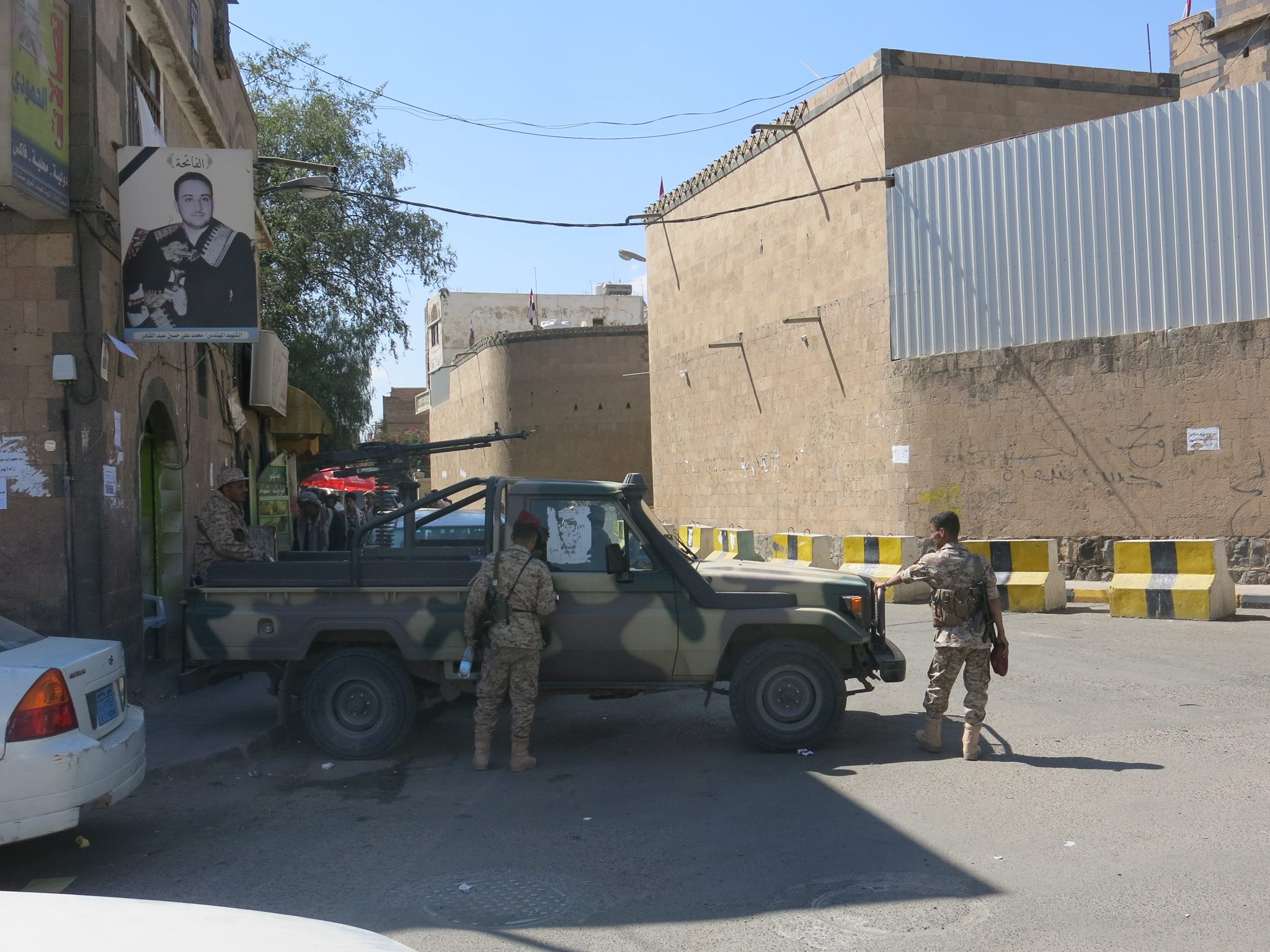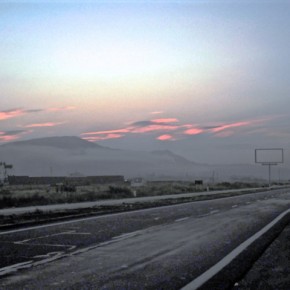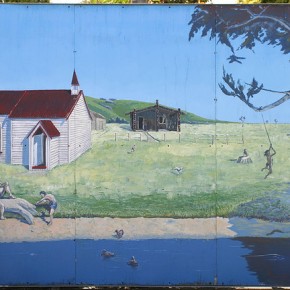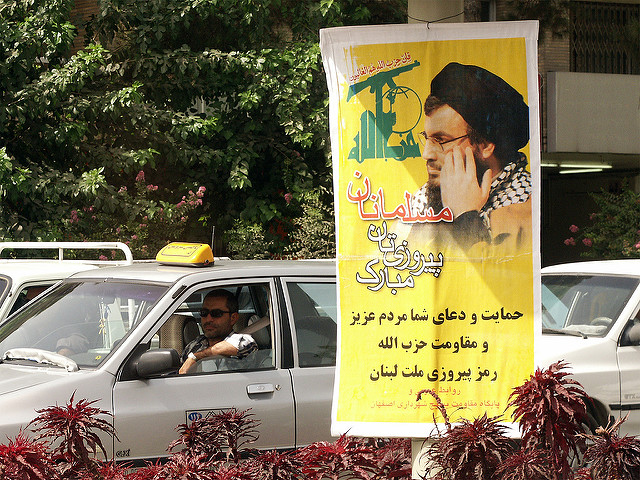I took a photo while the soldiers weren’t looking, and posted it on Facebook. I saw something that looked familiar, as a Pakistani. It was on 26th of September Street in Sana’a. A truck with a machine gun, and three infantrymen, sat quietly. I titled it, “War in the City.” A teacher at my college commented, “Are you serious??”
He told me on the way to lunch that I bothered him by saying “war in the city,” because there isn’t a war in the city. “Don’t do that thing journalists do with exaggerating stuff here,” he said. I think he was cautioning me against spreading Western propaganda that Yemen is a war-torn hellhole with its military waging war in its capital.
I was willing to bear the discomfort of disagreeing with him. I am not an ajnaabee liberal who is too politically correct to criticize anything here. I told him politely that he has bizarre standards of what constitutes “war in the city.” He admitted that there has been a comparatively larger military presence in Sana’a lately, especially with the spontaneous checkpoints that we have been running into near the school. But, he said, “There isn’t a war.”
There may not be a shooting war, but there is a conflict going on. It just so happens to be the type that we do not proactively take notice of. We have resigned ourselves to it, acquiescing to the background drone of fighter jets in the sky and trucks carrying troops through the streets. We have accepted that the nuisance of it all has become a part of our daily lives, with checkpoints causing traffic jams. We have become accustomed to the sight of machine guns on the backs of soliders. We have accepted so much so that we fail to recognize that just because they aren’t actively shooting at an enemy, doesn’t mean that there is no war.
It just so happens that they are engaged in as struggle against a possibility, namely, what civilians may end up doing. The type of doing that is portrayed in its most terrifyingly hopeless by swarthy, desert-loving terrorists. As a Pakistani, I’ve seen these types of military deployments more than once. My mother saw them during the reign of General Zia ul-Haq. Back then, the war in our city was in defense of the old regime. Zia ul-Haq understood that precarious social and economic structures were much more functional with iron-fisted dictatorship. And the conflict was waged against the new, that collective desire to exhale that was not yet articulated in a hopeful and effective manner.
What happens next, I wonder? Does a war in the city have different phases, at each stage of which people get upset at the phrasing of “war in the city” to describe it?
Photograph courtesy of the author.





